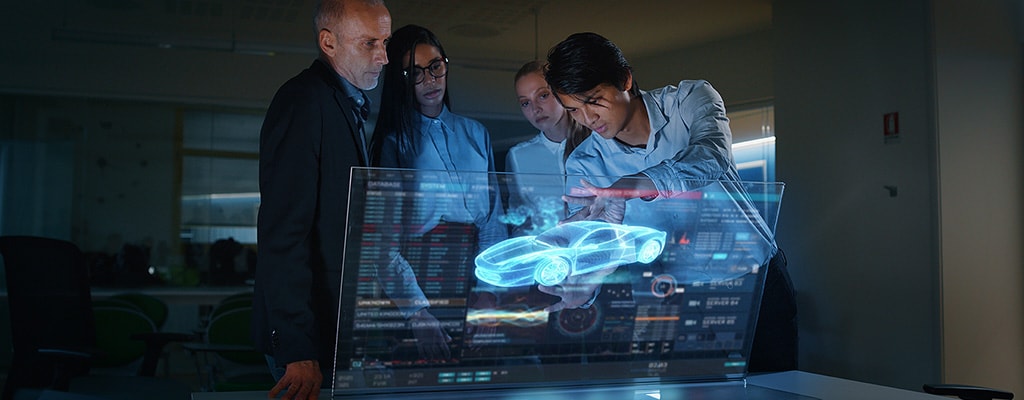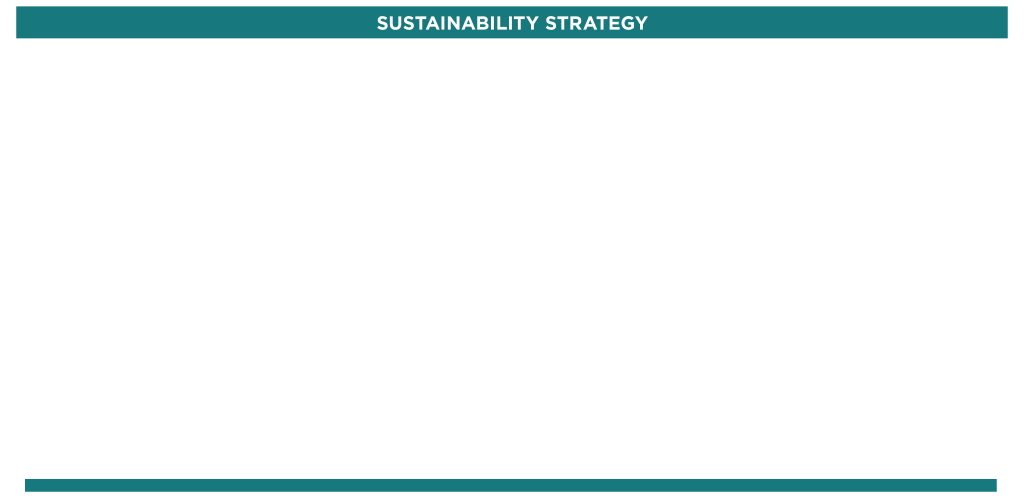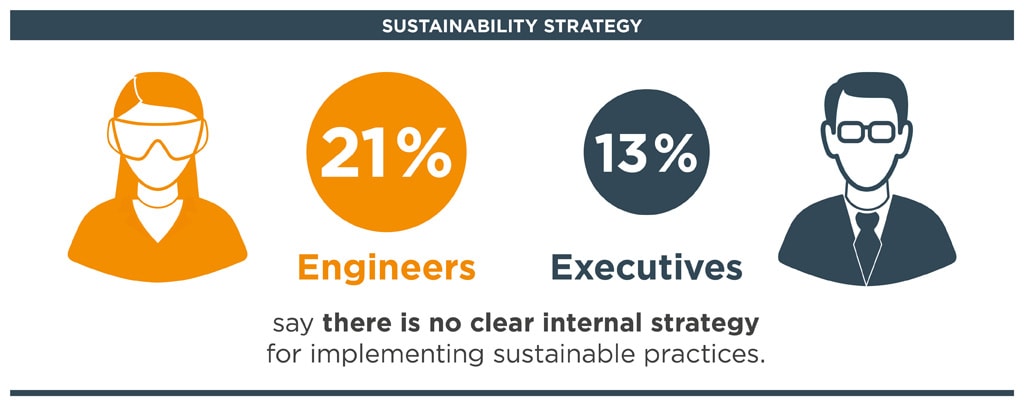
Innovation Insight
Embedding Sustainability into the Innovation Process
Author: Ralf Klädtke, VP & CTO, Transportation Solutions
The future will be more sustainable. Governments, companies, and consumers are seeking new ways to combat climate change and preserve natural resources for a better tomorrow. Advances in industrial technology will play a key role in delivering these innovations – through the products we create and the methods we use to manufacture them.
Despite this need for sustainable innovation, the TE Connectivity 2023 Industrial Technology Index (ITI) found some misalignment within organizations on how engineers and executives prioritize sustainability. Notably, the majority of executives and engineers are supportive of sustainability.
However, we identified that a rather significant share (11%) of executives rates sustainability as “not important,” whereas only 2% of engineers shared that view for their organizations.

Creating better alignment between engineers and executives on innovation goals is a recipe for sustained success. And in the case of prioritizing sustainability, better alignment can help organizations pursue important growth areas like renewable energy, electric mobility and the need for more efficient data centers to power the Internet of Things.
In fact, these are three of the five innovative technologies that were identified as a priority for more than 75% of ITI survey respondents. Just like the organizations we surveyed, TE has been navigating the role of innovation and addressing sustainability goals.
Through our work embracing sustainable practices, we’ve identified several key steps that can help align an entire organization around shared goals and embed sustainability into the innovation process.
Start with Top-down Commitment to Sustainability
When we asked executives why sustainability wasn’t a top priority for their organizations, the most common response was that they needed to meet other innovation goals first. But we believe that innovation and sustainability go hand in hand. The advancements creating a better future should also protect the environment and provide positive health, safety, and social impacts. This commitment must be driven from the top levels of an organization and should reach the “brains” and the “hearts” of the innovation team. Our people and the motivation of our teams define success for sustainability.
At TE, we embraced this mission by adopting our One Connected World strategy, which features sustainability in the four pillars of our company purpose: To create a safer, sustainable, productive, and connected future. We’ve backed this commitment with specific goals, including a 40% reduction in greenhouse gas (GHG) emissions from sources controlled by our company (Scope 1) and indirect emissions from purchased energy (Scope 2) by 2030; a 15% reduction in water use at 30 facilities by 2025; and partnerships with key suppliers to improve the sustainability of our supply chain.
Define a Clear Strategy to Pursue Sustainable Innovations
Although the vast majority of engineers we surveyed believe that sustainability is a priority for their organizations, they also cite a common challenge: 21% of engineers said their organization lacked a clear strategy for implementing sustainable practices. That’s why it’s critical to combine a top-down commitment with specific methods that embed sustainability into the innovation process.
Approximately 80% percent of GHG emissions across the product lifecycle are determined in the design stage1,a finding that inspired us to create our “Design for Sustainability” initiative to guide our product development strategy. This initiative includes a Product Stewardship Committee to help our company consider sustainability holistically across the entire product lifecycle, from raw materials and manufacturing through the product’s use and end-of-life options for reuse or recycling.
We also provide sustainability training for all engineers and an engineering toolbox that includes data, resources, and processes they can follow to make sustainability a foundational consideration of every new design.

Emphasize the Use of Sustainable Materials
The materials used to build a product play a significant role in its sustainability characteristics. We’ve found that 70%-90% of a company’s total GHG emissions are indirect emissions from up and down the value chain (Scope 3). Moreover, most Scope 3 emissions come from materials procurement – making the choice of materials and suppliers a critical way to improve sustainability.
At TE, our Engineering Toolbox includes resources to help engineers choose from an approved list of sustainable materials and suppliers. For example, we use a lot of plastic resins in our connector products and have found that more sustainable resins can provide a 35%-55% reduction in total CO2 emissions compared to traditional resins. Meanwhile, we have validated more than 50 plastic resins with reduced CO2 emissions our engineers can chose from to drive sustainability.
Another critical step is to reduce the weight of materials we use by focusing on product innovation and miniaturization. By offering sophisticated simulation tools, our engineers can effectively model the performance of smaller, lighter designs, creating the freedom to test innovative ideas.
Drive Continuous Improvement of Sustainability
Sustainable innovation isn’t limited to product design. Organizations can inspire their teams to continuously improve sustainability, exploring new production processes that reduce GHG emissions from their operations. For example, at TE, we’ve included waste reduction as a component of our Engineering Toolbox. This mindset helped us develop a method for re-grinding excess resin left over from the connector production process and using it to make additional components – reducing waste to near zero.
Innovative new processes can also lead to products that differentiate you from competitors. Recently, our engineering and operations teams jointly developed the GreenSilver contact surface technology for connectors. Unlike traditional plating technologies, this method dry-deposits silver on select connector parts, resulting in a 35% reduction in energy consumption and CO2 emissions and a 99% reduction in water consumption during manufacturing.
These components support TE’s sustainability commitment and help customers like EV manufacturers achieve their sustainability goals by reducing the consumption of metals, energy, and water in their supply chains.
Insights on Innovation in Transportation Technology
Sustainability is a Team Effort
Like innovation itself, sustainability improvements are driven by teams and especially by the motivation of a company’s people. As a result, companies that embrace sustainability are likely to attract more talent and be more innovative, competitive, and, accordingly, more successful.
A commitment to sustainability from top-level leadership and the continuous improvement of sustainability by motivated teams are key in embedding sustainability into every step of the complete value chain, including operations. This close collaboration should also extend outside the organization, engaging suppliers and customers to focus on innovations that meet the market’s performance, sustainability, and price needs. With this joint sustainability team approach, industrial technology companies can move toward a shared goal – delivering sustainable innovation that improves the world.
About the Author

Ralf Klädtke
Ralf Klädtke is vice president and chief technology officer (CTO) for TE Connectivity’s Transportation Solutions segment. He is responsible for providing thought leadership and guidance around the future innovation, growth plans and portfolio investments for the Transportation Solutions segment, as well as in guiding the segment’s technology roadmap. Appointed to the role in April 2021, Ralf has over 25 years of engineering and leadership experience with global technology companies. He is a former captain in the German Air Force and also held roles with the German Space Agency (DARA/DLR) and MAN Technologie where he worked on the X-38 crew transport vehicle.
Insights on TE Innovation and Sustainability
Citations
1 “Product Sustainability: Back to the Drawing Board,” McKinsey & Company, February 2022


 e
e
 e
e

